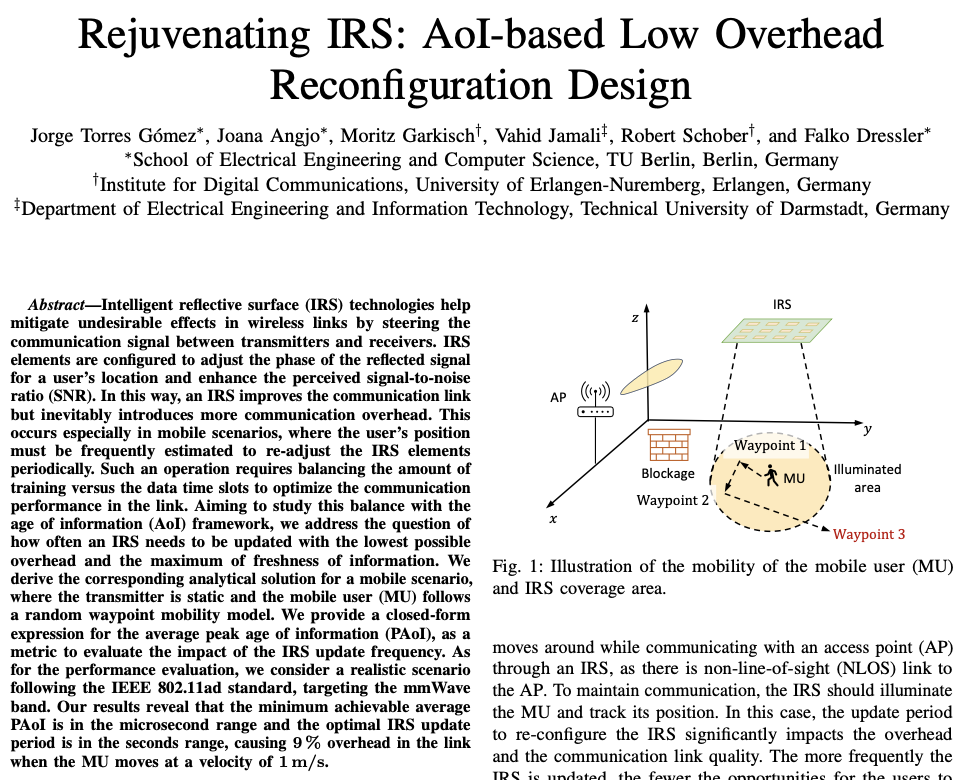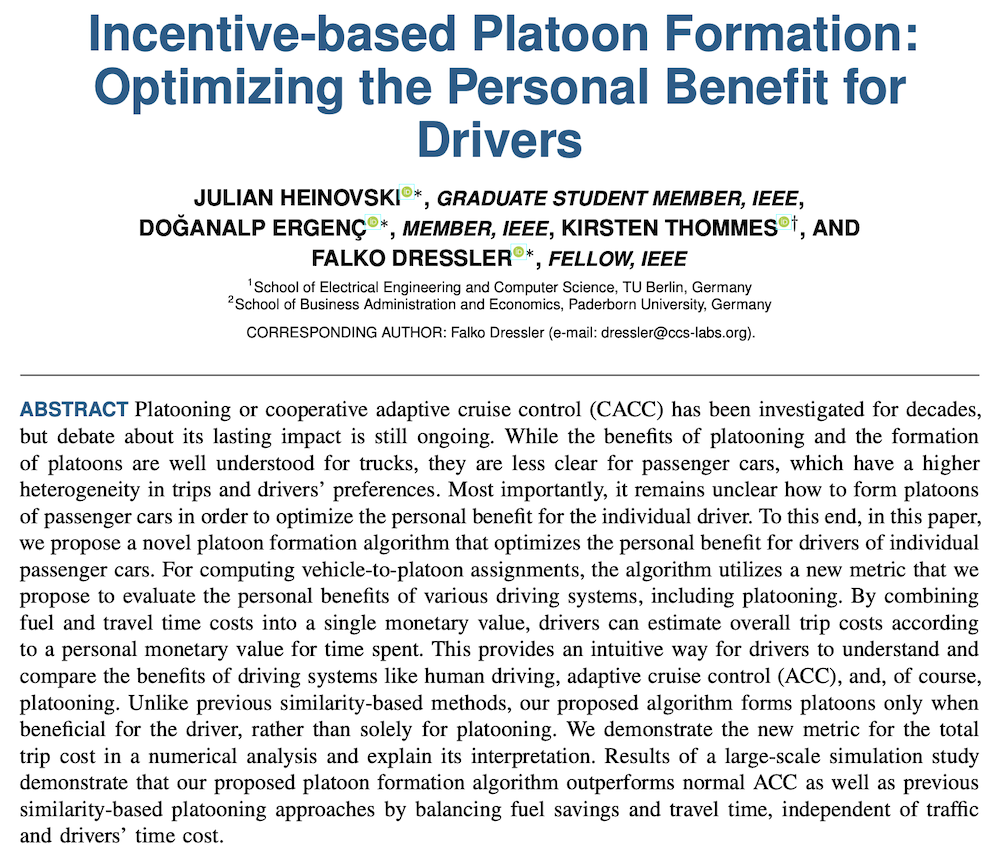Literature Database Entry
sommer2008simulation
Christoph Sommer, Isabel Dietrich and Falko Dressler, "A Simulation Model of DYMO for Ad Hoc Routing in OMNeT++," Proceedings of 1st ACM/ICST International Conference on Simulation Tools and Techniques for Communications, Networks and Systems (SIMUTools 2008), 1st ACM/ICST International Workshop on OMNeT++ (OMNeT++ 2008), Marseille, France, March 2008.
Abstract
Mobile Ad Hoc Networks (MANETs) have evolved in the last years into standards in the communication world. By definition, they do not need any network infrastructure to facilitate communication between participating nodes. Therefore, they are dealing with new challenges in the context of ad hoc routing. In this paper, we present our new implementation of the ad hoc routing protocol Dynamic MANET On Demand (DYMO) for the popular discrete event simulation environment OMNeT++. DYMO offers adaptation to changing network topology and determines unicast routes between nodes within the network on demand. Based on the developed model, we performed several simulation experiments to analyze the performance of DYMO with respect to changing network size and traffic conditions. The implementation of DYMO and the results of the simulation experiments are described in this paper.
Quick access
Authors' Version ![]() (PDF on this web site)
(PDF on this web site)
BibTeX ![]()
Contact
Christoph Sommer
Isabel Dietrich
Falko Dressler
BibTeX reference
@inproceedings{sommer2008simulation,
author = {Sommer, Christoph and Dietrich, Isabel and Dressler, Falko},
title = {{A Simulation Model of DYMO for Ad Hoc Routing in OMNeT++}},
publisher = {ACM},
isbn = {978-963-9799-20-2},
address = {Marseille, France},
booktitle = {1st ACM/ICST International Conference on Simulation Tools and Techniques for Communications, Networks and Systems (SIMUTools 2008), 1st ACM/ICST International Workshop on OMNeT++ (OMNeT++ 2008)},
month = {3},
year = {2008},
}
Copyright notice
Links to final or draft versions of papers are presented here to ensure timely dissemination of scholarly and technical work. Copyright and all rights therein are retained by authors or by other copyright holders. All persons copying this information are expected to adhere to the terms and constraints invoked by each author's copyright. In most cases, these works may not be reposted or distributed for commercial purposes without the explicit permission of the copyright holder.
The following applies to all papers listed above that have IEEE copyrights: Personal use of this material is permitted. However, permission to reprint/republish this material for advertising or promotional purposes or for creating new collective works for resale or redistribution to servers or lists, or to reuse any copyrighted component of this work in other works must be obtained from the IEEE.
The following applies to all papers listed above that are in submission to IEEE conference/workshop proceedings or journals: This work has been submitted to the IEEE for possible publication. Copyright may be transferred without notice, after which this version may no longer be accessible.
The following applies to all papers listed above that have ACM copyrights: ACM COPYRIGHT NOTICE. Permission to make digital or hard copies of part or all of this work for personal or classroom use is granted without fee provided that copies are not made or distributed for profit or commercial advantage and that copies bear this notice and the full citation on the first page. Copyrights for components of this work owned by others than ACM must be honored. Abstracting with credit is permitted. To copy otherwise, to republish, to post on servers, or to redistribute to lists, requires prior specific permission and/or a fee. Request permissions from Publications Dept., ACM, Inc., fax +1 (212) 869-0481, or permissions@acm.org.
The following applies to all SpringerLink papers listed above that have Springer Science+Business Media copyrights: The original publication is available at www.springerlink.com.
This page was automatically generated using BibDB and bib2web.







